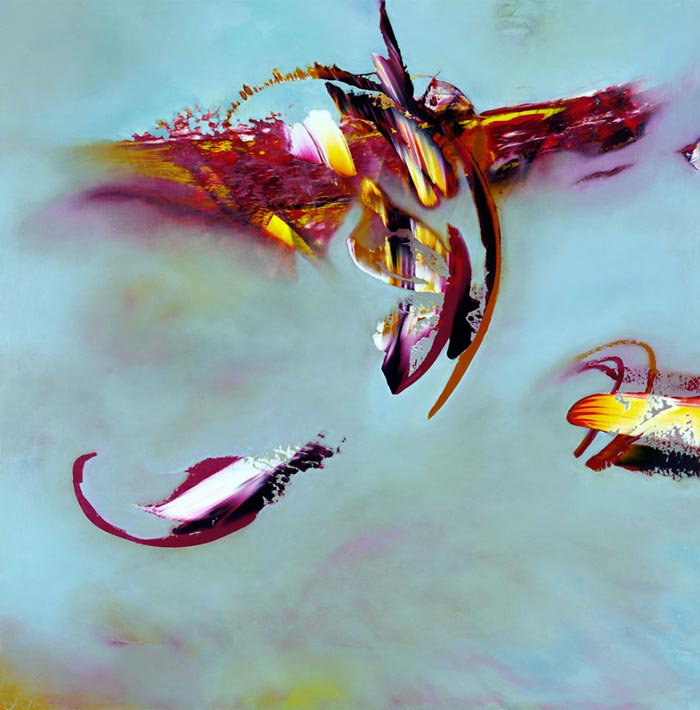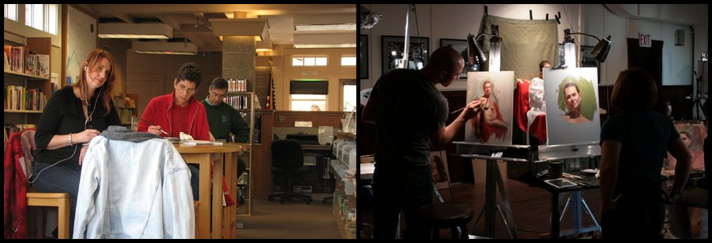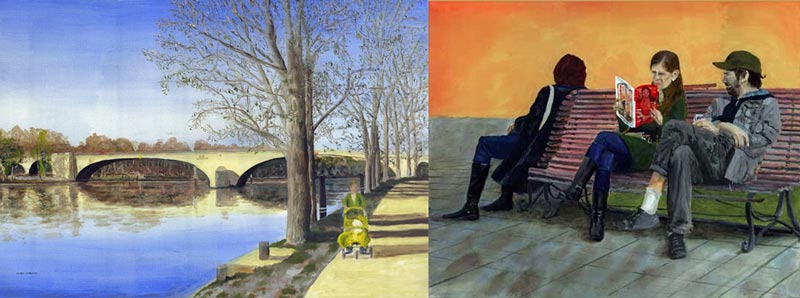Archived Comments
Enjoy the past comments below for Pricing a reproduction run…
Thomas Kinkade has supported non-profit organizations focusing on children, humanitarian relief, and the arts, including the Make-a-Wish Foundation, World Vision, Art for Children Charities, and The Salvation Army. He partnered with The Salvation Army to create two charity prints, The Season of Giving and The Light of Freedom. Proceeds from the sale of the prints were donated to The Salvation Army for their relief efforts at Ground Zero and to aid the victims of the attacks and their families. More than $2 million was donated as a result of this affiliation. In 2003, Kinkade was chosen as a National Spokesman for the Make-A-Wish Foundation, and during the 20 Years of Light Tour in 2004, he raised over $750,000 and granted 12 wishes for children with life-threatening medical conditions. He was or is a member of the Church of the Nazarine.
The printing arm of the Thomas Kinkade phenomenon, which at its height had 350 independently owned, franchised galleries, went into Chapter 11 bankruptcy in June, 2010. Snow globes, puzzles, cross stitches and wallpaper couldnt save it. One former dealers lawyer stated, Most of my clients got involved with Kinkade because it was presented as a religious opportunity. Being defrauded is awful enough, but doing it in the name of God is really despicable.
We have a lot of pictures in our house, mostly of animals and fish. We love them. None of them are painted on by hand that I know of. Arkansas
While we all need to give something, we artists are really hit on by the various charities. I gave away a lot of paintings and a few prints this year, maybe ten so far, and the requests just keep on coming. What do we artists say to these charities? How much of this can we take? Please give me some ideas.
Helene, the requests keep coming because you keep giving. Stop giving, and the requests will stop coming.
Helene, have you forgotten the word ‘no’? It comes in very handy in these situations.
Helene — The constant demand is a good reason to give small inexpensive prints or sets of cards, if you want to give something but are getting too many requests. Otherwise, just say, “I can’t do that right now” or “Sorry, we won’t be donating in the foreseeable future”. And then hang up. Don’t let them pile guilt on you — you don’t have to accept it, no matter how worthy the cause. If any other stranger called asking for money or property, would you give it to them? The worst are the ones who call asking for a gift of $___ or more.
Certainly a master marketer and perhaps public opinion manipulator, but not an artist. It is a shame that so many people thought they were “investing” in his scam. Why would you honor him in the least with a quote?
Dear Robert, I am sorry to say that Giclee Prints and editioning works only cheaps art. Yeah, its ok to buy a poster at IKEA if you have to. But making an edition of art and then selling it is just not the way to sell your work these days. Now, I do a print of my invitation painting and limit it to 50 prints. I then sell them WITH a 26 page hard cover book of the collection. The price for both is $100.00. You get a print for free if a painting is purchased. I want to sell my paintings, not have my work editioned and then cheapened. I even do christmas cards for the Children’s hospital. Sold in bundles of ten for $20.00 at the end of the day, I am helping a charity. But, this does not elevate my paintings. Paint everyday and do it like you don’t need the money. Then again, I sat beside Robert Bateman on an airplane one day. I asked him about the cheesy 1000 edition prints he does of his paintings (with the gold seal of authenticity and everything). He laughed and then showed me a picture of his 6 bedroom mega-home on Salt Spring Island…He said the prints paid for that house! I just about swallowed my tongue. That is just me… John
Helene, you asked the right question – “how much of this can we take”. Just answer your own question and decide how much you can afford. For example, I can afford to give 3 original paintings per year, so that’s what I do. It was easy for me to pick my top 3 favorite charities and say to others that I already give as much as I can afford… but may consider their charity in the future if things change (say the last part only to those that you really like and for which you won’t be bothered if they ask again).
I transformed myself into a “giver.” For the last couple of years I have actively sought charities that I could believe in — hospitals, special needs children, etc. As well as contributing to our community, I have raised my profile locally. I always give originals. Some of them sell for more at the fundraisers than in my two galleries.
The problem with reproductions is that masses of them pile up. Attempts to make them more special and unique (hand work and enhancing) have largely failed. There are still areas where people collect them, not the least of which is on cruise ships where there is free Champagne.
Here in France about twenty-five years ago all the artists self owned galleries hasted into prints and all the people took home was a rolled up paper at only a few francs, knocking the originals business loopy when price became the only issue for the tourist buyer who wandered through.
In July, Tatjana Mirkov-Popovicki’s expounded on the Master-Apprentice relationship: “I think that it is up to us to reinvent the apprenticeship of today.” How is the reinventing coming Tatjana?
There is always a tug of war in my mind about the unfair situation of only those with plenty of money being able to purchase originals, which then are enjoyed by a tiny number of people and feeling that no one should be deprived of the enjoyment of art. Why shouldn’t a person enjoy their morning coffee from a mug with a section of a painting as the outer design? Why shouldn’t everyone be able to look at a painting that puts a smile on their face before they even get out of bed? Why shouldn’t people confined to institutions have something inspiring to look at? You have guessed by now that I am not elitist about art. I don’t work at promoting mine; the paintings are bought by people who fall in love with them and want to have that feeling in their own homes. Most get hung near their front doors for guests to enjoy. On the other hand, I would like to marry my poetry with greeting cards. One person who managed to sell virtually all of his originals and did a greeting card each year was the highly esteemed Canadian watercolourist, the late Jack Reid. I did not see this as cheapening of his art. The image always had a compatible colour of line boxing the image (on acid free paper) so it could be framed if desired. I did a workshop with Jack Reid and felt that his original art was not cheapened in any way by this. In fact, I wish more artists would do cards and that they be able to sign them to advertise their work. Sharon
You may think I’m way over the top, slipping along the sides like a raw egg, but I believe an art object has to be relegated to the status of “holy”; (see ancient history). A gift cannot be a copy of that gift; it has to be the original. Hence I sell only originals, as I am about to do in an upcoming show at a gallery which gives 40% of the proceedings to a battered womens shelter. I happen to like drawings; so I offer many of them at affordable prices, plus some large expensive paintings. I think art is more than an image. An artist friend said, “art has to have DNA”, then he put some of his spit into the piece he was working on. Metaphysicians think that the IDEA is enough. That may work for them, but as an artist, a visual reminder is stingy & isn’t satisfying. Isn’t there enough phony stuff around already? I prefer childrens’ art, – made by hand.
My employer is one of the largest collectors of Leroy Neiman prints. He has duplicate prints squirreled away as an investment. Anyone with office wall space has to tolerate the vast, lurid sporting images. (There is a premium on wall sized white-boards throughout the organization.) So, down in the dungeon — actually an old walk-in freezer, next to his African safari weaponry, is this treasure trove or prints that he fully exects to cash in for vast profit. To be fair, the guy has a dozen enterprises going at a time, about half of which succeed. The remainer, he makes certain his liability is minimized. However, he is absolutely on the hook for the trove of Neiman prints. It’s commonly thought that he is a canny investor, and sometimes it’s true. However, I’m not seeing Neiman prices skyrocketing. In fact he’ll be lucky to recoup the costs of the glazing in the frames he’s mounted on walls. He took the standard advice to heart. He bought what he loved. And bought, and bought. I just wish he’d stopped before he got to my office.
Reproduction prices should be kept low so that poor people can enjoy images they love. All else is folly.


1 more 2 make 3 oil painting by Suzanne Partridge |













I handwrite the copyright information on the back of the painting and the dust cover, if framed. I put my contact details and any the fact that the painting is sold under condition that if I ask to borrow it for an exhibition, the purchaser will loan the painting out for exhibition.